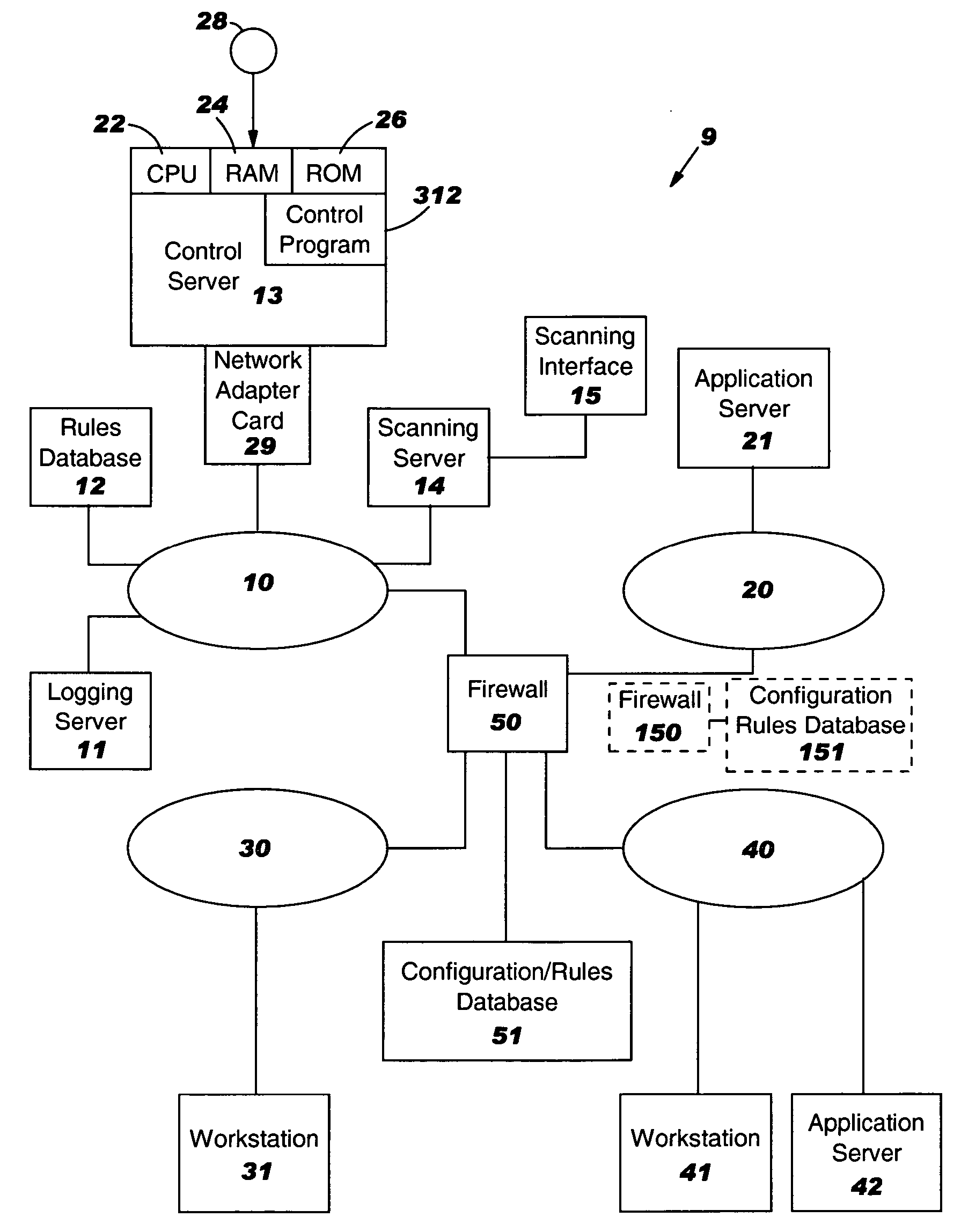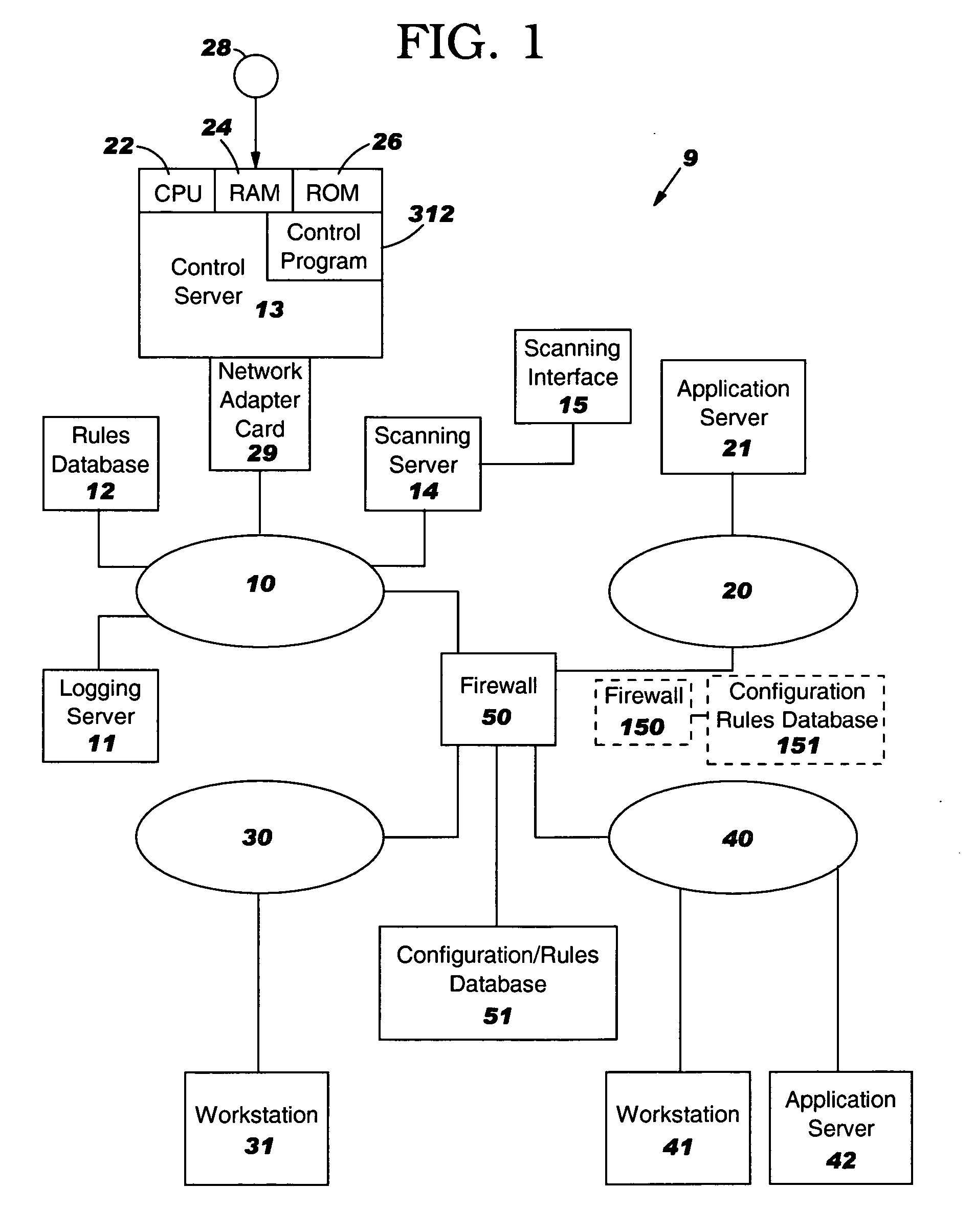System, method and program product to identify additional firewall rules that may be needed
a technology of firewall rules and system methods, applied in the field of system, method and program products to identify additional rules, can solve the problems of difficult identification of applications using such a port, limitation of the range of ports, and inability to thoroughly trust other entities and networks
- Summary
- Abstract
- Description
- Claims
- Application Information
AI Technical Summary
Benefits of technology
Problems solved by technology
Method used
Image
Examples
Embodiment Construction
[0018] The present invention will now be described in detail with reference to the figures, wherein like reference numbers indicate like elements. FIG. 1 illustrates four networks 10, 20, 30 and 40 interconnected by a firewall 50 in a multi-network system 9. There are a variety of computing devices on networks 20, 30 and 40, and their type is not important to the present invention. In the illustrated example, on network 20 is an application server 21, on network 40 is an application server 42, on network 30 is a computer such as a workstation 31 which initiates connectivity to either of the application servers 21 or 42, and on network 40 is a computer such as a workstation 41 which initiates connectivity to either of the application servers 21 or 42. Firewall 50 performs known functions of enforcing the rules within its security policy. The rules are maintained in a database 51 within or accessible to the firewall 50. The rules specify what combinations of source IP address, destina...
PUM
 Login to View More
Login to View More Abstract
Description
Claims
Application Information
 Login to View More
Login to View More - R&D
- Intellectual Property
- Life Sciences
- Materials
- Tech Scout
- Unparalleled Data Quality
- Higher Quality Content
- 60% Fewer Hallucinations
Browse by: Latest US Patents, China's latest patents, Technical Efficacy Thesaurus, Application Domain, Technology Topic, Popular Technical Reports.
© 2025 PatSnap. All rights reserved.Legal|Privacy policy|Modern Slavery Act Transparency Statement|Sitemap|About US| Contact US: help@patsnap.com



